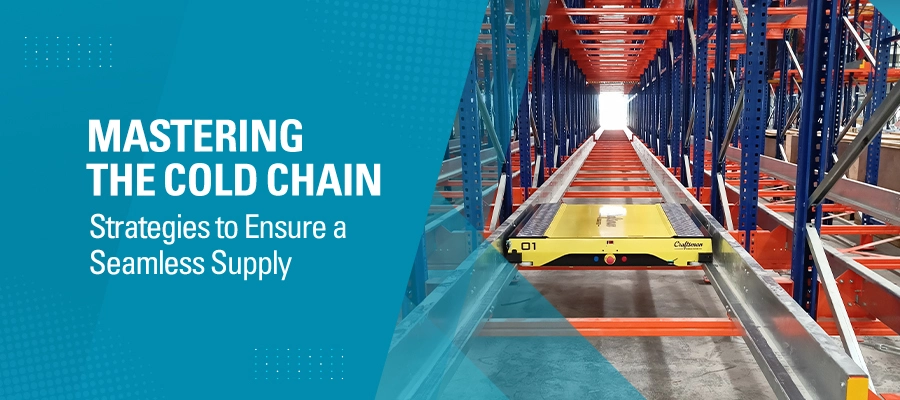Harnessing Efficiency: Warehouse Automation in the Solar Energy Revolution
In today's rapidly advancing world, the solar energy sector stands at the forefront of sustainable innovation.
Read More
In the realm of logistics and supply chain management, the cold chain plays a pivotal role in ensuring the safe and efficient transportation of temperature-sensitive goods. From pharmaceuticals to fresh produce, maintaining a consistent cold chain is critical to preserving the quality and integrity of these products. In this blog, we delve into the significance of the cold chain, its challenges, and the measures taken to ensure it remains unbroken.
Importance of the Cold Chain
The cold chain, also known as the "chill chain," is a seamless process that involves the transportation and storage of goods within a specific temperature range. This controlled environment is essential for products like vaccines, medicines, perishable foods, and other temperature-sensitive items. The cold chain helps prevent spoilage, degradation, or loss of efficacy, ensuring that these goods reach their destination in optimal condition.
Challenges in Maintaining the Cold Chain
Maintaining an unbroken cold chain comes with its set of challenges. External factors such as temperature variations, transportation delays, and inadequate infrastructure can jeopardize the integrity of the chain. For example, a momentary lapse in temperature control during transit can lead to irreversible damage to pharmaceuticals or compromise the freshness of perishable goods.
Technological Innovations in Cold Chain Management
Advancements in technology have played a crucial role in overcoming challenges associated with the cold chain. Temperature monitoring devices, GPS tracking, and real-time data analytics enable logistics providers to closely monitor and manage the conditions of the transported goods. Automated systems, such as refrigerated containers and specialized packaging, contribute to maintaining a consistent temperature throughout the entire supply chain.
Strategic Planning and Collaboration
Successful cold chain management requires meticulous planning and collaboration among stakeholders. From manufacturers and logistics providers to distributors and retailers, everyone involved must adhere to strict protocols to ensure the cold chain's continuity. This collaborative effort helps in identifying potential risks and implementing preventive measures to address them promptly.
Environmental Sustainability
In the pursuit of an unbroken cold chain, the industry is also increasingly focusing on sustainability. Companies are exploring eco-friendly refrigerants, energy-efficient transportation methods, and recyclable packaging to minimize the environmental impact of cold chain operations. Striking a balance between preserving product quality and minimizing the carbon footprint is becoming a key consideration for businesses.
Conclusion
In the dynamic landscape of global trade, the cold chain emerges as a lifeline for industries reliant on temperature-sensitive goods. "Never Break the Chain" serves not just as a slogan but as a commitment to ensuring the safety, efficacy, and freshness of products that impact human lives and well-being. As technology continues to advance, and stakeholders collaborate on best practices, the cold chain will evolve to meet the growing demands of a connected and conscientious world.